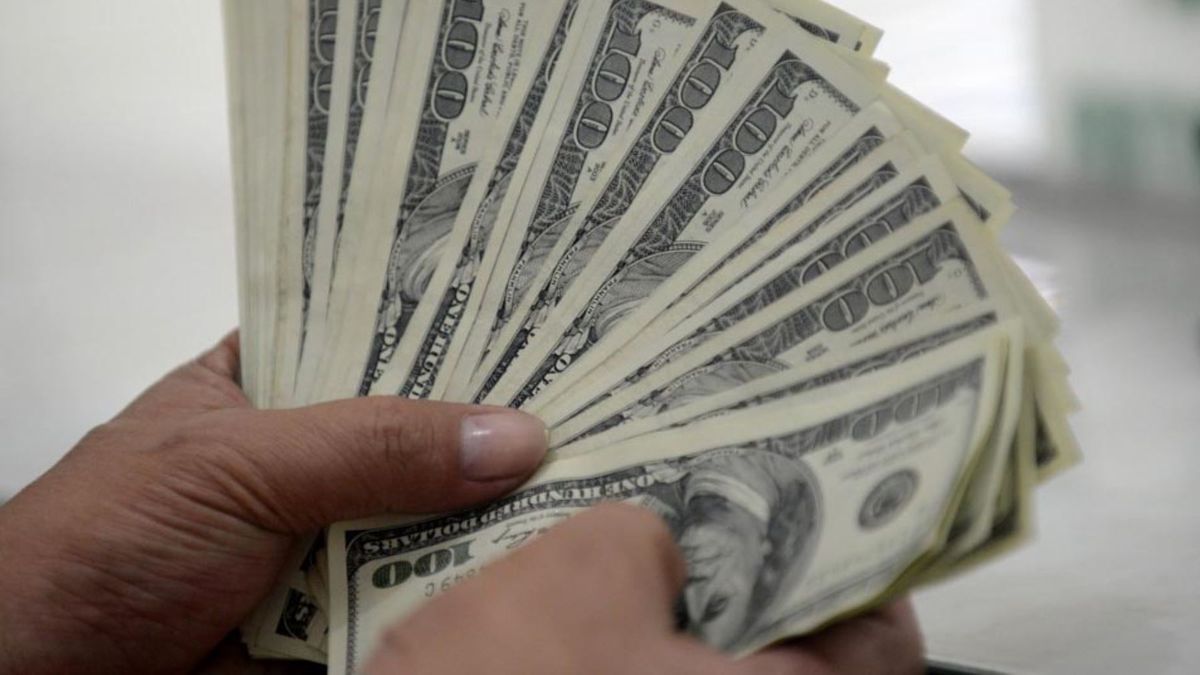In this way, the monetary authority’s sales in the foreign exchange market fell to $ 680 million in November.
The Dollar Cash with Settlement fell 0.9% in the week ($ 1.82) to $ 213.42. On the day, it recorded its third consecutive decline this in an expectant market due to the impact that the new Central Bank prohibition will have on the purchase of tickets abroad with interest-free installments. In this framework, the gap with the official fell to 110.1%.
Likewise, the MEP dollar fell $ 2.86 (-1.4%) to $ 200.17 in the week, while in this last round it contracted 1.7% and the spread with the wholesaler fell to 98.6%.
It should be remembered that the CCL dollar traded with the most liquid bonds (which were those that the monetary authority used to intervene) had risen 16% during the previous week and the MEP dollar had risen 10% ($ 19.05) in the same period .
It happened in the week that the monetary authority made the decision to implement a new strategy of having little or no intervention in the operation with the ultimate objective of preserving reserves.
Price of the dollar after the new BCRA measure
The falls this Friday in the segment of stock market dollars occurred after the Central Bank (BCRA) limited the financing of purchases in installments with credit cards of tickets and tourism services abroad such as accommodation, excursions and transport rental , among others, both directly or paid through travel agencies, web platforms or other intermediaries.
“Financial and non-financial entities issuing credit cards should not finance in installments purchases made by credit cards of their clients, human and legal persons, of tickets abroad and other tourist services abroad (such as accommodation, car rental , etc.), whether carried out directly with the service provider or indirectly, through a travel and / or tourism agency, web platforms or other intermediaries, “stated the BCRA in the document.
Thursday, the directory of central bank (BCRA) also decided to relax the recent regulations on the composition of the net global position of foreign currency of financial institutions, which basically did not allow them to increase their holdings in dollars.
“Thanks to this modification, the Financial System may return to a neutral foreign currency spot exchange position“, indicated the monetary authority in a statement, whose measure will take effect as of December.
Before the general elections, on November 4, and in the midst of a growing exchange rate tension (when the blue had touched $ 200 for the first time), the BCRA had ruled that financial entities could not increase their global position in foreign currency until the end of the month, in order to avoid speculation about possible jumps in the exchange rate.
blue dollar
The blue dollar was stable at $ 201 this Friday, according to a survey of Ambit in the Black Market of Foreign Currency. In this way, he cut a streak of six consecutive weekly rises.
The parallel dollar accumulated a decrease of 50 cents since Tuesday. Thus, the gap with the wholesale official dropped from 100% to 99.4%.
Even so, the informal accumulated seven consecutive days operating at $ 200 or above that level, closer to the CCL ($ 212) than to the solidarity ($ 175).
So far in November, the informal dollar accumulates a rise of $ 3.50 (+ 1.8%), after climbing $ 11.50 in October (+ 6.2%).
Official dollar
The wholesale dollar, for its part, rose twelve cents to $ 100.80, under the strict regulation of the BCRA, in a day with a frank buying trend that did not present a good volume of genuine income.
Prices almost always moved with staggered increases and with greater amplitude between highs and lows than that registered on other occasions. The official presence was constant throughout the development of the wheel, limiting the deviations in prices according to the parameters defined for today.
The minimums were recorded with the first agreed operation, at $ 100.72, four cents above the previous end. The authorized demand, destined to meet foreign obligations, was very solid throughout the day, causing price increases that reached a maximum of $ 100.80 in the middle of the morning. The official intervention, with sales in the sector where banks and companies operate, set a limit to the rise in the wholesale exchange rate, with occasional price cuts, which, however, did not help the values to settle at the closing price. today’s highs.
In the week that just ended, the wholesale exchange rate advanced 34 cents, a rise much higher than the 24 cents registered in the previous week. Since last April 28, the wholesale exchange rate did not record a rise of the magnitude of today, except for those registered at each beginning of the week.
“The next few days will serve to verify if there is a change in the strategy of updating dollar prices or if, on the contrary, this week is just an adjustment that does not modify the current policy in this matter,” said the analyst Gustavo Quintana.
In the retail segment, The dollar today closed almost stable this Friday at $ 106.17 -without taxes-, according to the average of the main banks in the financial system. In turn, the retail value of the US dollar at Banco Nación remained at $ 105.75.
The savings dollar or solidarity dollar -which includes a 30% of the PAÍS tax, and a 35% on account of the Income Tax- advanced two cents to $ 175.18.
Source From: Ambito
David William is a talented author who has made a name for himself in the world of writing. He is a professional author who writes on a wide range of topics, from general interest to opinion news. David is currently working as a writer at 24 hours worlds where he brings his unique perspective and in-depth research to his articles, making them both informative and engaging.



